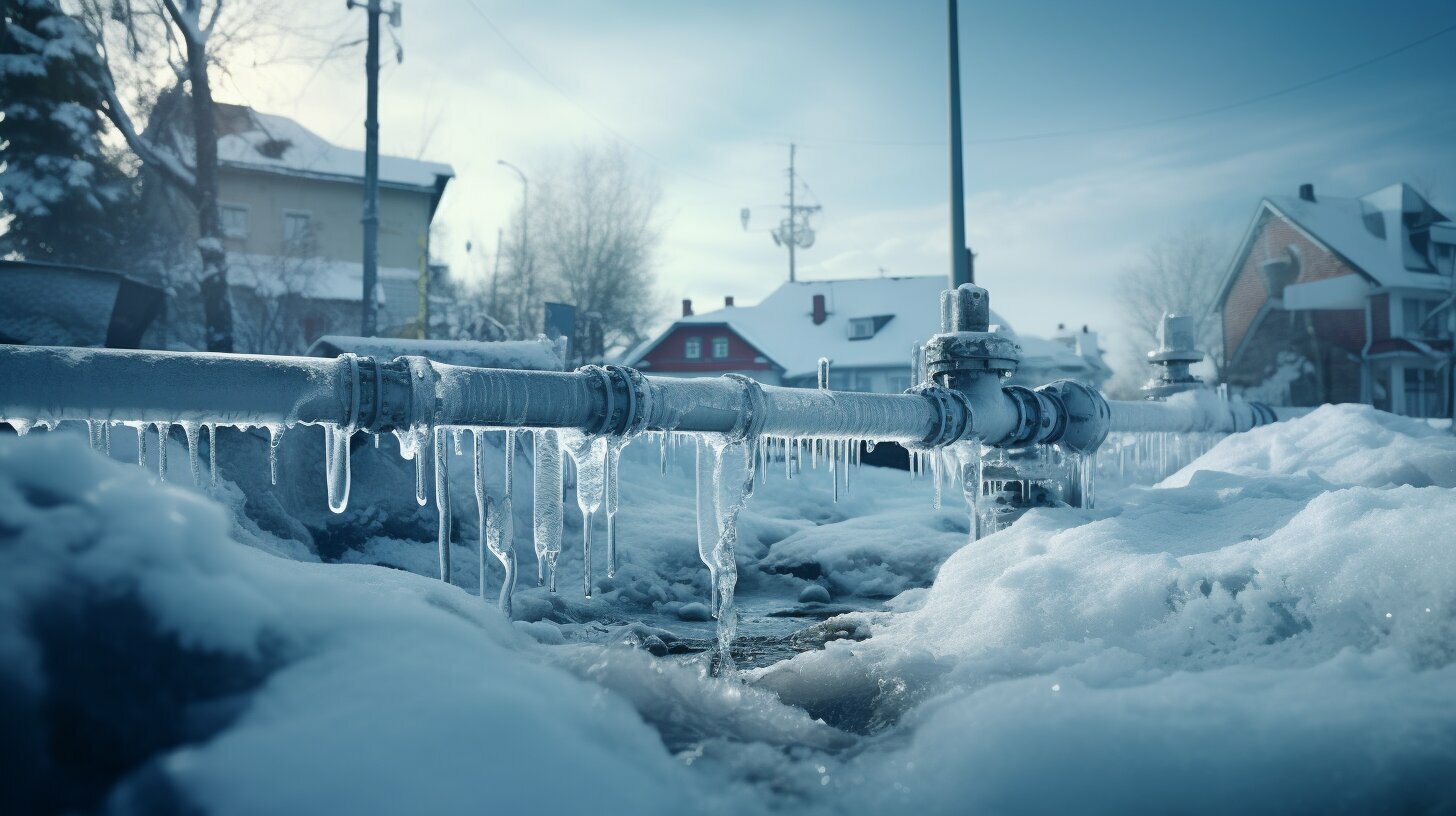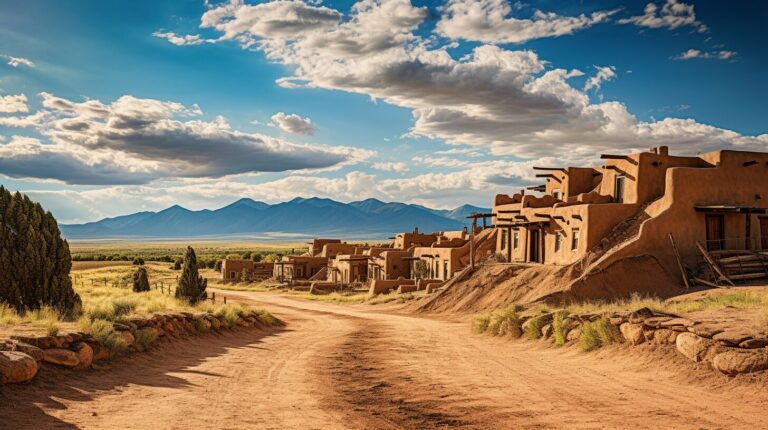Why Do Water Pipes Sometimes Burst in the Winter? Get the Scoop!
Bursting water pipes during the winter can be a chilling problem, but have you ever wondered why it happens? Let’s dive into the fascinating world of frozen pipes and discover the causes behind their unexpected bursts in the colder months.
Key Takeaways:
- Water pipes can burst in the winter due to the expansion of frozen water molecules.
- The pressure created by expanding ice within the pipes can cause them to rupture.
- Uninsulated pipes and those in unheated areas are at the highest risk of bursting.
- Insulating vulnerable pipes and allowing faucets to drip can help prevent frozen bursts.
- When pipes freeze, it’s best to wait for them to thaw naturally or use safe thawing methods.
The Science Behind Bursting Pipes in Winter
Understanding the science behind bursting pipes in winter is the key to keeping your plumbing intact. When the temperature drops, water inside the pipes can freeze, causing it to expand. This expansion creates pressure within the pipe, and if the pressure becomes too much to handle, the pipe can rupture and burst.
Contrary to popular belief, the burst usually occurs in a section of the pipe with little to no ice. This is because as water freezes, it releases latent heat, which keeps the surrounding ice from forming. The pressure builds up in the unfrozen section, leading to a burst pipe.
Insulation and Prevention
To protect your pipes from freezing and bursting, it’s important to insulate vulnerable pipes in unheated areas, such as basements and attics. A simple and effective method is to use foam or fiberglass sleeves to provide insulation and reduce heat transfer.
Additionally, keeping a faucet open to let water run as a trickle can prevent frozen burst pipes. The constant flow of water helps to prevent the water from becoming stagnant and freezing within the pipes.
Thawing Frozen Pipes
If your pipes do freeze, it’s crucial not to panic. It’s best to wait for them to thaw naturally as sudden thawing can cause the pipes to burst. However, if you need to expedite the thawing process, there are a few safe methods you can use.
Applying concentrated heat using a hairdryer or heating blankets can help thaw the frozen pipes. Just be sure to start from the end nearest to the faucet and work your way towards it. Avoid using a torch, as it can cause stress problems and lead to cracking of the pipe.
Remember, prevention is always better than dealing with the aftermath of a burst pipe. Insulate your pipes, keep the water running, and take immediate action if you suspect a pipe has burst. By understanding the science behind bursting pipes in winter, you can protect your plumbing and avoid the headache of water damage.
| Insulation Tips | Thawing Methods |
|---|---|
| Insulate vulnerable pipes with foam or fiberglass sleeves | Wait for pipes to naturally thaw |
| Keep a faucet open to let water run as a trickle | Apply concentrated heat using a hairdryer or heating blankets |
Frozen Pipes: Signs and Risks
Spotting the signs of frozen pipes and understanding the increased risk of bursts in winter are crucial for preventing costly plumbing disasters. When temperatures plummet, water inside pipes can freeze, causing blockages and potentially leading to pipe bursts. But how can you tell if your pipes are frozen? Here are some telltale signs:
- Decreased water flow: If you notice a significant decrease in water flow or no water coming out of your faucets, it could be a sign of frozen pipes. The ice blockage prevents water from flowing through the pipes.
- Strange noises: Frozen pipes can create strange noises such as banging, creaking, or gurgling sounds. These noises occur as the ice expands, putting pressure on the pipe walls.
- Frost on pipes: Check exposed pipes in unheated areas of your home, like basements or crawl spaces, for frost accumulation. This is a clear indication that the pipes are at risk of freezing.
Now that you know the signs, let’s dive into the risks associated with frozen pipes. As water freezes, it expands and creates pressure within the pipes. This pressure can cause the pipe to crack or burst, leading to water leakage and potential damage to your home.
Pipes in unheated areas, those located on exterior walls, and uninsulated pipes are particularly vulnerable to freezing and bursting. The bursting typically occurs in a section of the pipe with little to no ice, which can come as a surprise. That’s why it’s important to take preventive measures and protect your pipes before winter hits.
Protecting Your Pipes: Winter Maintenance Tips
To minimize the risk of frozen pipe bursts, consider following these tips:
- Insulate vulnerable pipes: Use foam or fiberglass sleeves to insulate exposed pipes in unheated areas. This can help maintain a warmer temperature around the pipes, reducing the likelihood of freezing.
- Allow faucets to drip: When temperatures drop below freezing, leaving faucets slightly open to allow a trickle of water can help prevent pipes from freezing. The moving water is less likely to freeze than stagnant water.
- Seal air leaks: Check for any gaps or cracks in the areas where pipes run through walls, floors, or ceilings. Use caulk or insulation to seal these air leaks, preventing cold air from reaching the pipes.
In conclusion, being aware of the signs of frozen pipes and understanding the risks associated with winter weather is key to protecting your plumbing system. By taking preventive measures and ensuring adequate insulation, you can avoid the headache and expense of dealing with burst pipes. Remember to reach out to a professional plumbing service if you suspect frozen pipes or if a pipe bursts, and consider contacting your insurance company for any necessary claims or further guidance.
Preventing Frozen Pipe Bursts: Tips and Tricks
Don’t let freezing temperatures leave you with burst pipes – follow these tips and tricks to keep your plumbing in perfect condition.
1. Insulate vulnerable pipes: Pipes that are not insulated and located in unheated areas are at the highest risk of freezing and bursting. To prevent this, consider insulating vulnerable pipes using foam or fiberglass sleeves. These sleeves act as a protective layer, reducing the chances of freezing and subsequent pipe bursts.
2. Keep faucets running: When temperatures drop below freezing, leaving faucets open to let water run as a trickle can provide relief to your pipes. The constant flow of water helps prevent freezing by keeping the water in motion. Remember, a small trickle is all it takes to keep your pipes safe from freezing.
3. Thawing frozen pipes: If you find that your pipes have frozen, it’s crucial to thaw them properly to avoid further damage. Avoid using a torch or open flame, as this can create stress and cracks in the pipe. Instead, wait for the pipes to thaw naturally or use methods like applying concentrated heat or heating blankets. Patience is key here, as rushing the thawing process can exacerbate the problem.
4. Shut off water supply and contact professionals: In the unfortunate event of a pipe bursting, it’s important to act swiftly. Locate the main water shut-off valve and turn it off to stop the water flow. Then, contact a professional plumbing service for immediate repairs. Keep in mind that there may be a wait time due to high demand during winter months. If severe water damage is present, it’s advisable to contact your insurance company and consider reaching out to a water damage restoration company to prevent mold growth and further damage.
Remember, prevention is key!
By taking proactive steps to protect your pipes during winter, you can avoid the hassle and cost of dealing with burst pipes. Insulating vulnerable pipes, keeping faucets running, thawing frozen pipes cautiously, and contacting professionals for repairs are all crucial steps in preventing water damage. So, stay ahead of the freezing temperatures and keep your plumbing in perfect condition!
| Tips to Prevent Frozen Pipe Bursts: | Actions |
|---|---|
| Insulate vulnerable pipes | Use foam or fiberglass sleeves |
| Keep faucets running | Let water run as a trickle |
| Thawing frozen pipes | Avoid torches; use concentrated heat or heating blankets |
| Shut off water supply | Contact professional plumbing service |
Dealing with Burst Pipes: What to Do
Burst pipes can be a nightmare, but knowing how to handle the situation can save you from extensive damage. In the unfortunate event of a burst pipe during winter, it’s crucial to take immediate action to minimize water damage and prevent further complications. Here’s a step-by-step guide on what to do:
- Shut off the water supply: Locate the main water shut-off valve in your home and turn it off. This will stop the flow of water and prevent any additional flooding.
- Contact a plumbing service: Call a professional plumber right away to assess the situation and make the necessary repairs. Burst pipes often require specialized skills and equipment to fix properly.
- Minimize water damage: While waiting for the plumber to arrive, take steps to minimize water damage. Use towels or buckets to collect any standing water and place them strategically to catch dripping water. If there’s a risk of water reaching electrical outlets or appliances, turn off the electricity to avoid potential hazards.
- Consider insurance and restoration: If the burst pipe has caused severe water damage to your property, it’s essential to contact your insurance company and document the incident. They can guide you through the claims process and help cover the costs of repairs. Additionally, you may want to consider contacting a water damage restoration company to assess the extent of the damage and prevent the growth of mold or further structural issues.
Remember, burst pipes are not a DIY project. It’s crucial to rely on qualified professionals to handle the repairs and ensure the safety of your home. Taking swift action and following these steps will help you navigate through the ordeal and minimize the impact of a burst pipe in winter.
| Pipe Burst Protocol: | Key Actions: |
|---|---|
| Step 1 | Shut off the main water supply |
| Step 2 | Contact a professional plumber |
| Step 3 | Minimize water damage |
| Step 4 | Contact insurance and restoration services |
Conclusion
Protecting your water pipes during the winter months is crucial in preventing costly and inconvenient bursts. As we’ve explored in this article, the main cause of water pipe bursts in winter is the expansion of water molecules when they freeze. This expansion creates pressure within the pipe, leading to ruptures.
Contrary to popular belief, the burst usually occurs in a section of the pipe with little to no ice. This means that even if you see no signs of ice buildup, your pipes are still at risk. Insulating vulnerable pipes with foam or fiberglass sleeves is one effective way to prevent frozen burst pipes. Additionally, keeping a faucet open to let water run as a trickle can help relieve pressure and avoid freezing.
If your pipes do freeze, it’s important to avoid panic and wait for them to thaw naturally. Applying concentrated heat or using heating blankets can help speed up the thawing process, but it’s crucial not to use a torch as it can cause stress problems and cracking of the pipe.
In the unfortunate event of a pipe burst, it’s essential to shut off the water supply immediately and contact a reliable plumbing service for repairs. However, due to high demand during the winter season, there may be a wait time for a professional to arrive. If there is severe water damage, it’s advisable to reach out to your insurance company and consider contacting a water damage restoration company to prevent mold and further damage.
FAQ
Why do water pipes sometimes burst in the winter?
Water pipes can burst in the winter due to the expansion of water molecules when they freeze. As water freezes, the molecules expand and create pressure within the pipe. This pressure can become too much for the pipe to handle, leading to a rupture and a burst pipe.
What are the causes of water pipe bursts in winter?
The main cause of water pipe bursts in winter is the expansion of frozen water molecules. Contrary to popular belief, the burst usually occurs in a section of the pipe with little to no ice. Pipes that are not insulated and indoor pipes in unheated areas, such as basements and attics, are at the greatest risk of bursting.
How can I prevent water pipe bursts in cold weather?
To prevent water pipe bursts in cold weather, it is important to insulate vulnerable pipes with foam or fiberglass sleeves. Keeping the faucet open to let water run as a trickle can also help prevent freezing. Additionally, maintaining a heated temperature in areas with pipes, such as basements and attics, can reduce the risk of bursts.
What are the signs of frozen pipes in winter?
Signs of frozen pipes in winter include no water coming out of faucets, strange smells coming from drains or faucets, visible frost on the pipes, or strange noises when running water. If you suspect your pipes may be frozen, it is crucial to take action to prevent a burst.
How can I thaw frozen water pipes quickly?
If your pipes are frozen, it is best to wait for them to thaw naturally. However, if you need to speed up the process, you can try applying concentrated heat to the frozen area or using heating blankets. It is important not to use a torch, as it can lead to stress problems and cracking of the pipe.
What should I do if a pipe bursts during winter?
If a pipe bursts during winter, the water supply should be shut off immediately to prevent further damage. Contacting a plumbing service for repairs is crucial, though there may be a wait time due to high demand. If there is severe water damage present, it is advised to contact an insurance company and consider reaching out to a water damage restoration company to prevent mold and further damage.






